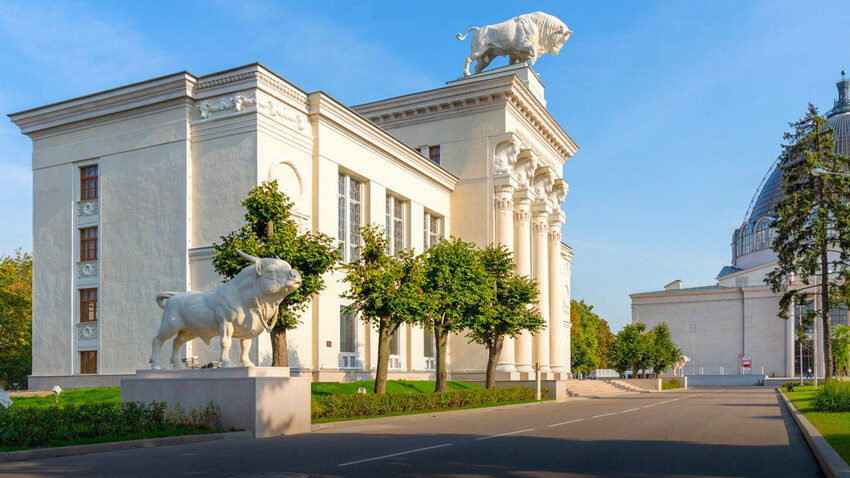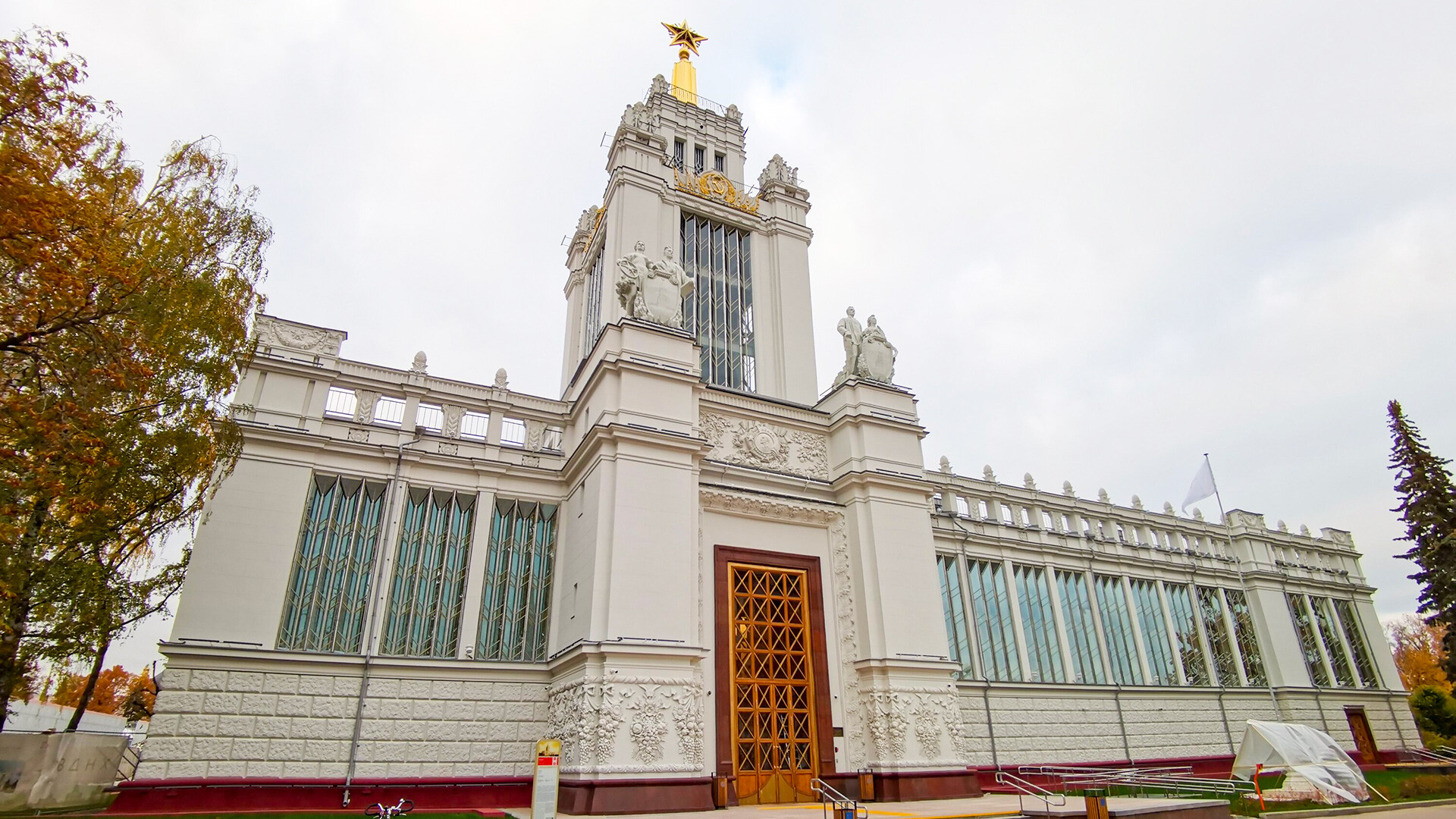
There were two versions of this pavilion. The first was built back in 1939, however, after World War II, the half-wooden building was torn down. In the 1950s, it was rebuilt in a new place in the Stalin Empire style with Baroque and Classicism elements.
Until 1956, the pavilion was called ‘Glavmyaso’, then it was renamed to ‘Meat industry’. Its first floor hosted an exhibition dedicated to the achievements of the Soviet meat industry, while its second floor had a tasting hall, where guests could try deficit produce, manufactured by meat-processing plants, as well as purchase it.
In the 1990s, the meat industry exhibition closed down and the pavilion itself was rented out for commercial and office spaces.
After the recent restoration, it was decided to revive the pavilion’s 1950s atmosphere. The unique ceramic painting inside was restored, as well as marble on the walls and the bronze chandeliers. Even the ceramic fountain in one of the halls was recreated.
The main symbol of the pavilion was also restored – a large sculpture of a bull on the roof. The original version was created back in the 1930s, but the sculpture was damaged during relocation. The bull’s appearance had to be recreated with the help of archive photos – as well as the stucco facade depicting bulls.
This pavilion is third among all other VDNKh buildings in terms of height; only the ‘Space’ and ‘Central’ pavilions are taller. Like many other buildings, this one was also rebuilt – the first ‘Grain’ pavilion was torn down in 1938-1939.
The building hosted an exhibition dedicated to the USSR’s grain and vegetable industries. This exhibition also closed down in the 1990s and the pavilion was rented out.

Restoration, however, revived its historic gilded 3.5-meter-tall spire, as well as the ruby star that crowned it. It was assembled anew from the shards of the old star, found in the pavilion’s attic, and the original framework.
By the way, one of the few things that has survived almost entirely are the stained glass windows. In one of the halls, renovators restored a unique painting that creates an illusion of the absence of a ceiling – such an effect was often used when decorating palaces and churches during the Renaissance. The fresco depicts the sky with rolling clouds and fluttering red banners.
Now, this pavilion will house an exhibition by the Moscow Polytechnic University.
If using any of Russia Beyond's content, partly or in full, always provide an active hyperlink to the original material.
Subscribe
to our newsletter!
Get the week's best stories straight to your inbox